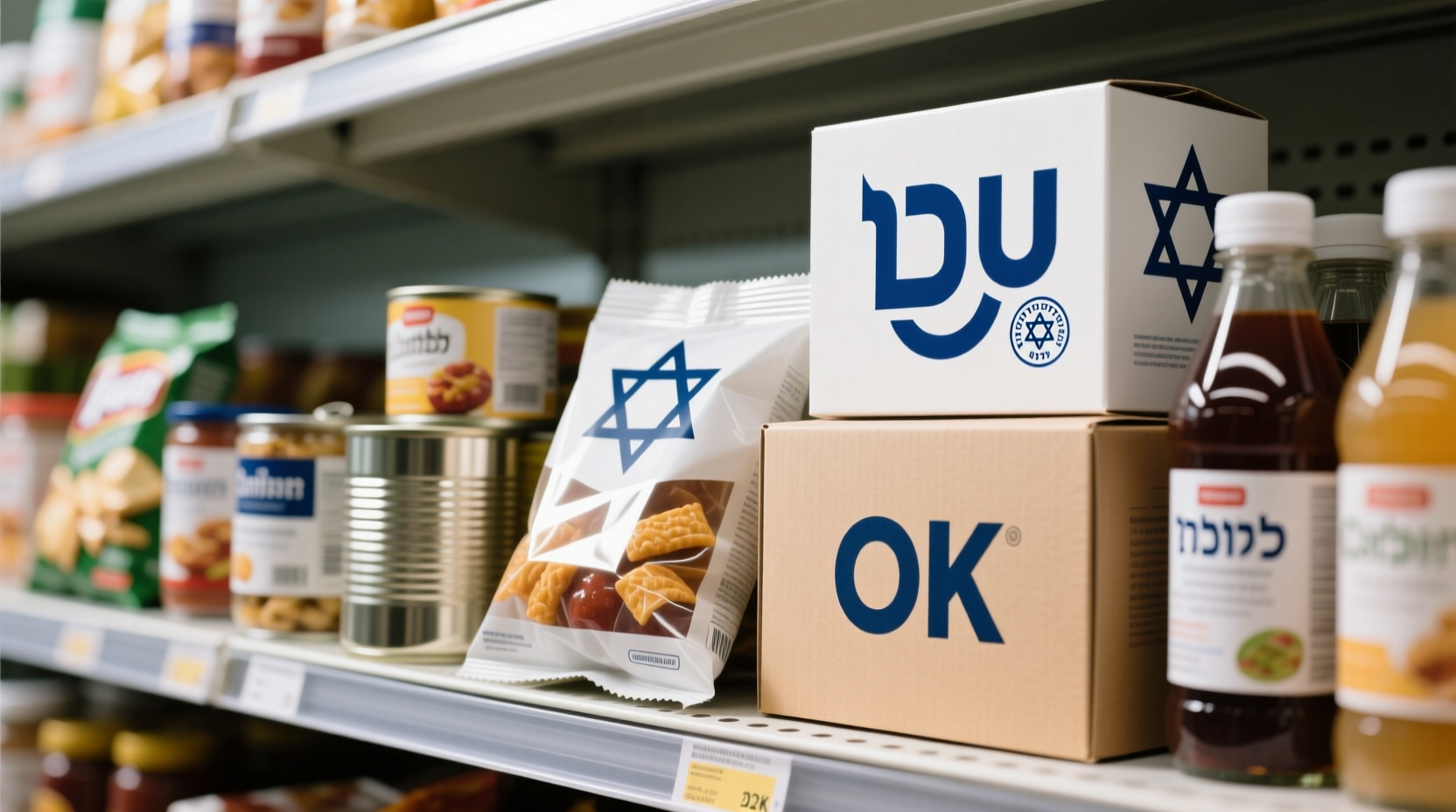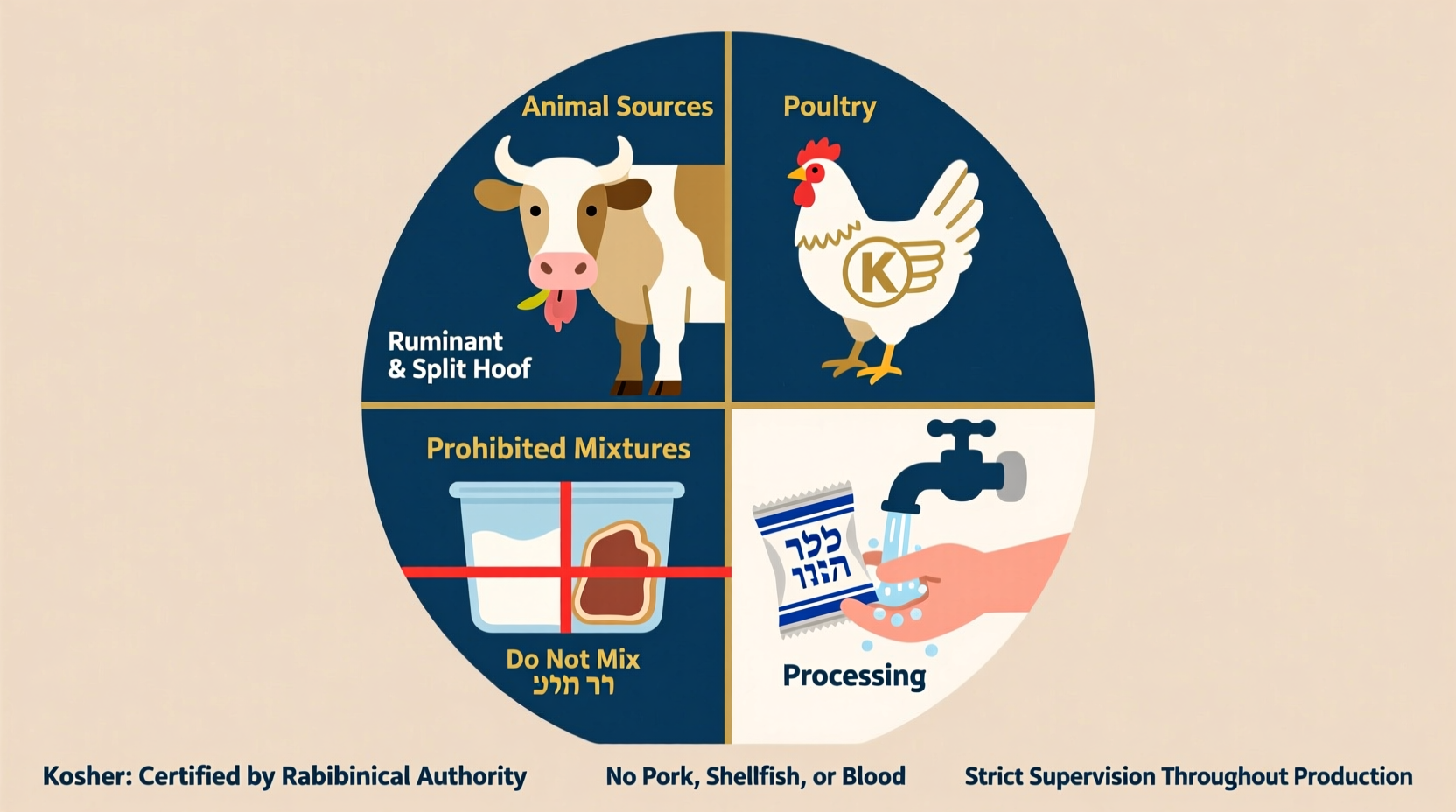Food becomes kosher when it adheres to Jewish dietary laws (kashrut) derived from the Torah, featuring permitted animals, proper slaughter methods, complete blood removal, and strict separation of meat and dairy products.
Understanding what makes food kosher isn't just about checking a label—it's about recognizing a centuries-old system of food preparation that affects millions of consumers worldwide. Whether you're exploring kosher eating for religious reasons, dietary preferences, or simple curiosity, this guide delivers the essential facts you need to navigate kosher food with confidence.
The Biblical Foundation of Kosher Laws
Kosher dietary regulations originate from the Torah, specifically Leviticus 11 and Deuteronomy 14. These ancient texts establish the framework still followed today, distinguishing between permitted ( kosher ) and forbidden ( treif ) foods based on specific biological characteristics. The word "kosher" itself means "fit" or "proper" in Hebrew, signifying food that meets these religious standards.
Kosher Requirements by Food Category
Not all foods require the same kosher considerations. Different rules apply depending on whether you're examining meat, dairy, fish, or plant-based products.
Permitted Animals: The Defining Characteristics
For land animals to qualify as kosher, they must meet two specific criteria:
- They must chew their cud (ruminants)
- They must have completely split hooves
| Kosher Animals | Non-Kosher Animals | Reason for Non-Kosher Status |
|---|---|---|
| Cow, sheep, goat | Pig | Splits hooves but doesn't chew cud |
| Deer, bison | Rabbit | Chews cud but doesn't have split hooves |
| N/A | Camel | Chews cud but has partially split hooves |
Fish must possess both fins and scales that can be easily removed without damaging the skin. This excludes shellfish, eels, catfish, and sharks. The Orthodox Union confirms that "only fish with both fins and scales in their adult stage qualify as kosher" (OU Kosher, 2023).
The Critical Slaughter Process: Shechita
Kosher meat requires a specific slaughter method called shechita performed by a trained Jewish individual (shochet). This process involves:
- A swift, uninterrupted cut across the throat with a perfectly sharp knife
- Severing the trachea and esophagus
- Ensuring immediate loss of consciousness
- Rigorous inspection for any physical defects (bedikah)
After slaughter, the meat undergoes soaking and salting (melicha) to remove all traces of blood, as consuming blood is strictly prohibited in Jewish law.
Complete Separation of Meat and Dairy
One of the most recognized kosher requirements prohibits mixing meat and dairy products. This separation extends beyond simultaneous consumption to include:
- Separate cooking utensils and dishes
- Waiting periods between meat and dairy meals (typically 3-6 hours)
- Dedicated preparation areas in kosher kitchens
This rule stems from the biblical commandment "You shall not boil a kid in its mother's milk," repeated three times in the Torah, signifying its importance.
The Evolution of Kosher Certification
Kosher food preparation has evolved significantly from its biblical origins to today's complex global food system. Understanding this timeline helps clarify why certification has become essential:
| Time Period | Development | Impact on Kosher Practice |
|---|---|---|
| Biblical Era (c. 1300 BCE) | Original dietary laws established in Torah | Basic framework for permitted/prohibited foods |
| Talmudic Period (200-500 CE) | Rabbinic interpretation and expansion of laws | Detailed guidelines for implementation |
| Medieval Period | Standardization of kosher slaughter practices | Formalized shechita procedures |
| Industrial Revolution | Mass food production challenges | Need for supervision of factory processes |
| 20th Century | Formal kosher certification organizations established | Standardized symbols and oversight systems |
| 21st Century | Global kosher market expansion | Certification for international food supply chains |
Modern Kosher Certification Process
Today's complex food manufacturing requires rigorous oversight to ensure kosher compliance. The certification process involves:
Ingredient Verification
Certifying agencies examine every ingredient in a product, including:
- Base components
- Processing aids
- Additives and flavorings
- Equipment cleaning agents
Production Facility Inspection
Certification isn't just about ingredients—it requires examining the entire production environment:
- Shared equipment usage schedules
- Cleaning protocols between production runs
- Prevention of cross-contamination
- Supervision during production
Recognizing Kosher Symbols
The kosher market features various certification symbols, with the Orthodox Union's "U" inside a circle being the most widely recognized globally. Other common symbols include:
- OK - OK Kosher Certification
- Kof-K - Kof-K Kosher Supervision
- Star-K - Star-K Kosher Certification
- Circle U - Orthodox Union
According to the Jewish Virtual Library, "The presence of a reliable kosher symbol indicates that a product has been supervised from start to finish by qualified rabbinic authorities" (Jewish Virtual Library, 2024).

Common Misconceptions About Kosher Food
Several myths persist about kosher dietary laws that deserve clarification:
"Kosher Means Rabbi-Blessed Food"
Contrary to popular belief, kosher food doesn't require rabbinic blessing. The kosher status comes from adherence to preparation methods, not spiritual blessing. As Chabad.org explains, "Kosher is a process, not a blessing" (Chabad, 2023).
"All Wine is Automatically Kosher"
Wine requires special kosher supervision because traditional Jewish law prohibits non-Jews from handling wine intended for religious use. This prevents potential idolatrous use of the product.
"Kosher and Halal Are Identical"
While both Jewish and Islamic dietary laws share some similarities (like prohibiting pork), significant differences exist in slaughter methods, permitted animals, and specific restrictions.
Practical Guidance for Identifying Kosher Foods
For those navigating kosher food options, these practical steps will help:
Reading Labels Effectively
Look for reliable kosher certification symbols rather than relying on ingredient lists alone. Some non-kosher ingredients appear in unexpected products:
- Gelatin (often from non-kosher animals)
- Enzymes in cheese production
- L-cysteine in commercial bread
- Shellac coating on candies
Understanding Context Boundaries
Kosher requirements apply differently depending on context:
- Home kitchens: Require complete separation of meat and dairy equipment
- Restaurants: Must maintain separate preparation areas and staff training
- Industrial facilities: Need scheduled production runs and thorough cleaning between kosher and non-kosher products
- Passover: Additional restrictions apply beyond standard kosher requirements
The Kashrut Authority notes that "context determines the application of kosher laws, with stricter requirements in commercial settings than home environments" (Kashrut Authority, 2024).
Navigating Processed Foods
Modern processed foods present unique challenges for kosher consumers:
- Check for reliable certification on every purchase
- Be aware that product formulations can change without notice
- Understand that "pareve" (neutral) products can become non-kosher through production methods
- Recognize that vegan products aren't automatically kosher
Why Kosher Matters Beyond Religious Observance
While rooted in religious tradition, kosher practices have gained broader appeal for several reasons:
- Enhanced food safety standards from rigorous inspection processes
- Transparency in ingredient sourcing
- Alignment with certain dietary preferences (like lactose intolerance management)
- Increased consumer confidence in food production methods
According to a 2023 market analysis by the Orthodox Union, "approximately 70% of kosher product consumers are not Jewish, drawn by the perceived quality and safety standards" (OU Kosher Market Report, 2023).











 浙公网安备
33010002000092号
浙公网安备
33010002000092号 浙B2-20120091-4
浙B2-20120091-4